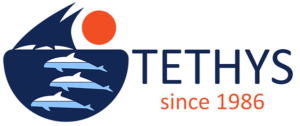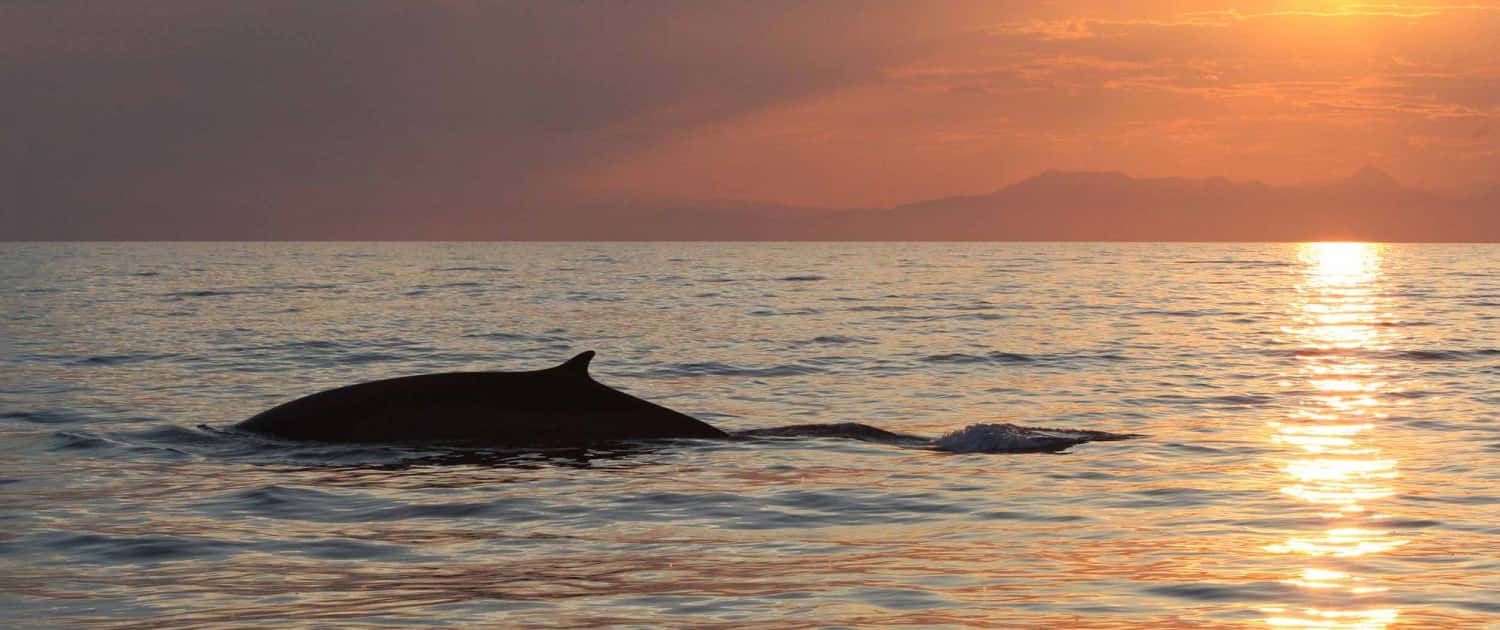Pelagos Sanctuary for Mediterranean Marine Mammals
In 1987 Tethys started conducting the first research cruises to systematically and quantitatively compare cetacean presence across the Italian seas, which emphasized the overwhelming importance of the Ligurian Sea for many species of whales and dolphins. In those years and in those same waters, the use of large-scale pelagic driftnets was causing the accidental capture and death of large numbers of cetaceans, causing widespread public outcry. As a consequence of this chain of events, in 1990 Tethys developed the idea of creating a sanctuary in the area to address the problem. The idea grew into a project, named “Pelagos”, envisaging the establishment of a marine sanctuary in Ligurian and Corsican seas, conducted in collaboration with Europe Conservation, and NGO, and with the support of Rotary International.
On 2 March 1991 G. Notarbartolo di Sciara presented the “Pelagos Sanctuary” idea in Monaco to Prince Rainier III, thereby triggering a long process eventually leading to the signature of a formal Treaty amongst France, Italy and the Principality of Monaco (Rome, 25 November 1999) establishing the Sanctuary (Notarbartolo 2008)
The Pelagos Sanctuary for Mediterranean Marine Mammals was the world’s first marine protected area established beyond national jurisdiction, and contributes with 76% to the total marine surface currently covered by Mediterranean marine protected areas. More about the Pelagos Sanctuary.
Lošinj Dolphin Reserve
Based on a decade-long study of the ecology, behaviour and conservation status of common bottlenose dolphins, Tursiops truncatus, in the North Adriatic waters comprised between the islands of Lošinj, Cres and Pag – during the period transiting from Yugoslavia to Croatia – and considering the potential disturbance deriving to the dolphins by the increasing pleasure vessel traffic during summer, Tethys was the first proponent of a Dolphin Reserve in the area, which however no longer exists. Having been established by Croatia in 2006, the reserve was met with strong opposition by local stakeholders, and its establishment was revoked in 2009.
Samadai Reef spinner dolphin resting area, Egypt, Red Sea
Between 2004 and 2014 members of Tethys engaged in research and conservation activities in Egypt, focusing on the ecology and conservation status of cetaceans found along Egypt’s Red Sea coast, between Hurghada and the border with Sudan. In 2003 experts from Tethys were asked by the Egyptian government to develop a management plan of Samadai, an open sea coral lagoon containing a resting area for spinner dolphins (Stenella longirostris). Adopted in January 2004, the management plan of Samadai, envisaging the closing off to human access of a very large portion of the reef comprising the dolphins’ critical resting habitat, ensured the continuation of the use of the reef by the dolphins (Notarbartolo 2004).
Subsequent work included investigating the dolphin presence in the lagoon and monitoring the effects of management, as well as training the rangers in the collection of monitoring data. In the following years a cooperative work was started with HEPCA, a local NGO, within the framework of a wider project envisaging, inter alia, density surveys of several species of dolphins found in the area, with support from the Italian – Egyptian Debt Swap Programme (Notarbartolo et al. 2009).
Support to the development of Important Marine Mammal Areas
Important Marine Mammal Areas (IMMAs) – discrete portions of habitat important to marine mammal species, that have the potential to be delineated and managed for conservation – are being developed by the IUCN Task Force on Marine Mammal Protected Areas, largely with the technical, logistic and administrative support of Tethys. IMMAs consist of areas that deserve space-based protection and can be seen as a potential “marine mammal layer” for consideration by governments, intergovernmental organisations, conservation groups, and the general public. The networking of IMMAs can represent a cost-effective approach to conservation, as they can help supply the basis for Marine Spatial Planning and support marine biodiversity conservation effort in general. For example, by linking IMMAs to the wider world of the Convention on Biological Diversity’s Ecologically or Biologically Significant Areas (CBD EBSAs), IUCN Key Biodiversity Areas (KBAs), and Convention on Migratory Species (CMS) work, the process of habitat protection for marine mammals and the ecosystems that support them will be accelerated.
Literature
Notarbartolo di Sciara G., Agardy T., Hyrenbach D., Scovazzi T., Van Klaveren P. 2008. The Pelagos Sanctuary for Mediterranean marine mammals. Aquatic Conservation: Marine and Freshwater Ecosystems 18:367-391. DOI: 10.1002/aqc.855
Notarbartolo di Sciara G. 2004. Samadai Dolphin Sanctuary 2004 provisional management plan. Interim Report to EEAA – Nature Conservation Sector. 7 p.
Notarbartolo di Sciara G., Hanafy M.H., Fouda M.M., Afifi A., Costa M. 2009. Spinner dolphin (Stenella longirostris) resting habitat in Samadai Reef (Egypt, Red Sea) protected through tourism management. Journal of the Marine Biological Association of the United Kingdom 89(1):211-216. doi:10.1017/S0025315408002221


